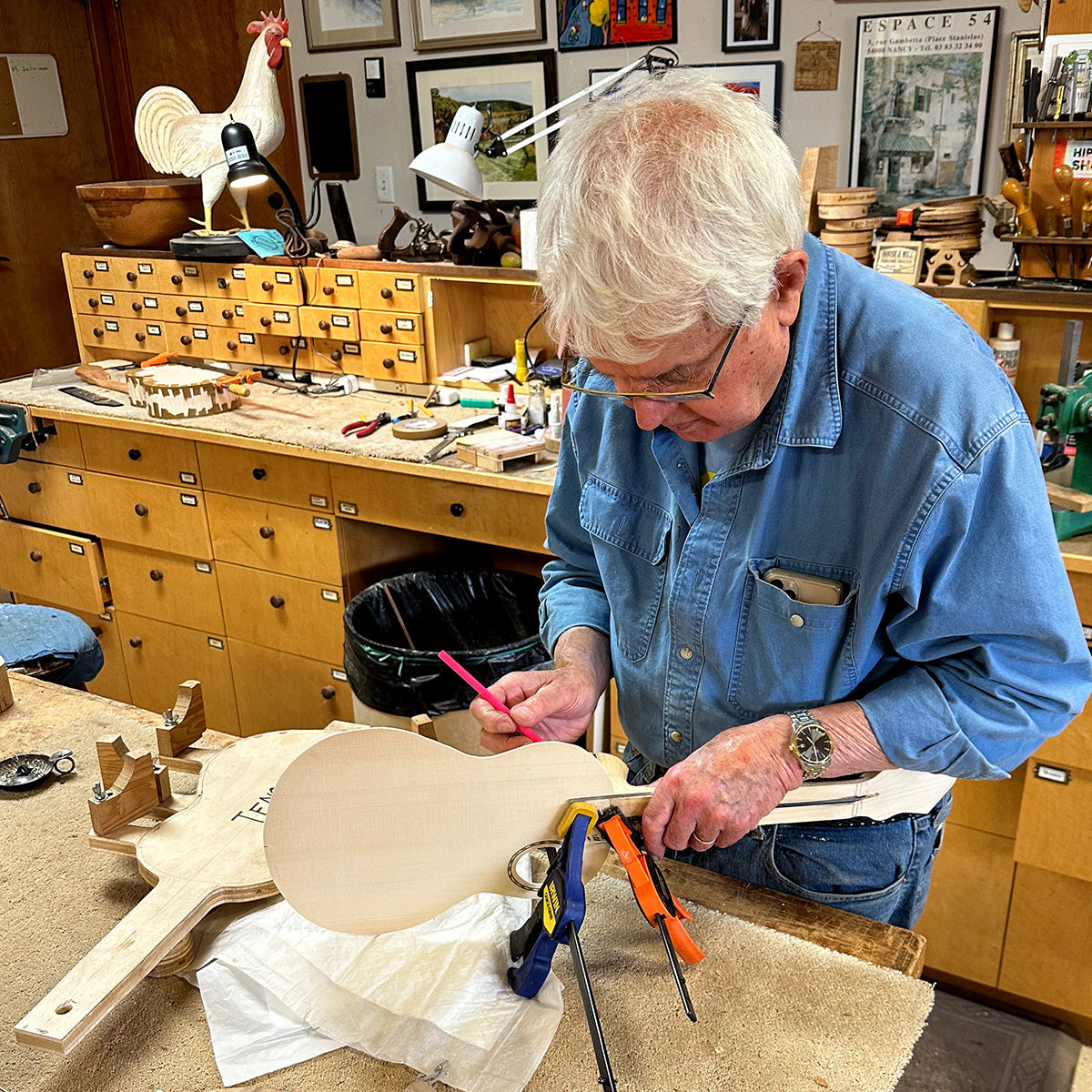When a guitar string is plucked, the energy of the string is transferred to the soundboard, and the movement of the wood vibrates the air around it and radiates sound. However, any movement is resisted by the internal friction of the wood itself, a property known as damping.
Spruce in general has rather low damping, but as with stiffness and density, there is a great deal of variability in this property. Guitars built with spruce on the high end of the damping continuum will feature a rather “dull” tone that decays quickly and accentuates the fundamental frequency at the expense of the overtones. Guitars built with low damping wood tend to radiate sound quite efficiently, with a relatively “quick” response, and tend to be preferred in blind listening tests regardless of design or build. By convention, scientists express the damping coefficient as a “Q” factor, which is the inverse of damping – thus, low damping = high Q rating.


